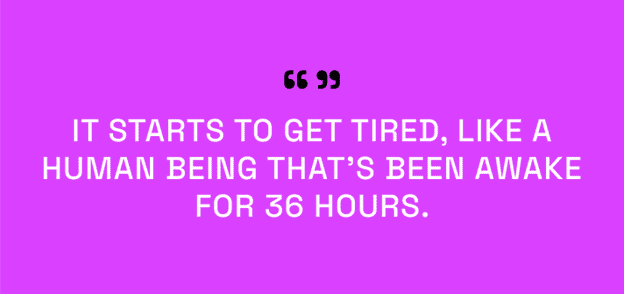
When AI Gets Punch-Drunk
You know that feeling when you’ve been in back-to-back meetings for six hours, someone asks you a simple question, and your brain just… stalls? That glazed-over, “I’m technically awake but functionally useless” state?
Yeah. AI does that too.
We’ve been treating these language models like they’re infinite processing machines—just keep shoveling context at them and they’ll figure it out. Dump in your entire database schema. Paste three years of Slack history. Throw in every policy document ever written. More is better, right?
Wrong. Dead wrong.
As Rob described it: “It starts to get tired, like a human being that’s been awake for 36 hours.” And when AI gets tired, it doesn’t just slow down—it starts hallucinating. Making stuff up. Confidently spewing nonsense because it’s drowning in irrelevant noise and grasping for patterns that aren’t there.
Sound familiar? It should. Because this is the exact same problem we’ve been fighting with data for decades.
The Data Bloat Playbook, Now in AI Form
Remember the early days of self-service BI? Everyone got access to everything, and suddenly every report took seventeen clicks and pulled from nine different tables nobody understood. Users burned out. Reports became unreliable. The whole promise of “democratized data” turned into a dumpster fire of confusion.
The fix wasn’t more data. It wasn’t better algorithms. It was curation. It was discipline. It was someone finally saying, “No, you don’t need all 847 columns—you need these twelve.”
We’re watching the same movie again, just with a different cast. Only now instead of overwhelming humans with too many tables, we’re overwhelming AI with too much context. And just like humans, when you overload the system, quality collapses.

Context Windows Aren’t Infinite (Even When They Claim to Be)
Sure, vendors keep bragging about bigger context windows. “We support a million tokens!” Great. Know what else supports unlimited input? A landfill. Doesn’t mean you should live in one.
The problem isn’t capacity—it’s relevance. When you stuff an AI’s context window with everything remotely related to a question, you’re not helping it think better. You’re burying the signal in noise. You’re making it work harder to find what actually matters.
Rob nailed it: “You can’t just give it everything; you have to be precise.”
Precision. Not more. Not bigger. Precision. The same discipline that made your data models work is what makes AI work. Feed it what it needs, nothing more. That means understanding your business well enough to know what’s signal and what’s static. That means building filters, hierarchies, and relationships that pre-qualify information before it ever hits the model.
The Cure Is Context Discipline
Here’s the fix, and it’s beautifully simple: treat your AI context like you’d treat a stressed-out analyst at 11 PM before a board meeting. Don’t dump your entire filing cabinet on their desk. Give them exactly what they need, organized the way they need it, with clear labels and no garbage.
That means:
- Governed data models that already encode what matters
- Semantic layers that translate business concepts before they hit the AI
- Smart retrieval that pulls relevant context, not everything context
- Human curation that decides what’s worth including in the first place
This isn’t about limiting AI’s potential. It’s about respecting how intelligence actually works—human or artificial. Nobody does their best thinking while drowning in information. Not you. Not your team. Not your language model.
Less Context, Better Answers
The irony is delicious: we spent years teaching people that more data doesn’t equal better insights. That filtering and focusing beats hoarding. That clarity trumps volume every single time.
Now we’re learning it all over again with AI. Same lesson, new technology.
So yeah, AI fatigue is real. But it’s not inevitable. It’s a symptom of bad information architecture dressed up as cutting-edge technology. Fix the plumbing—give AI clean, relevant, purposeful context—and suddenly that “tired” model becomes sharp again.
Because the truth is, intelligence doesn’t scale with input size. It scales with input quality. Always has. Always will.
Get in touch with a P3 team member